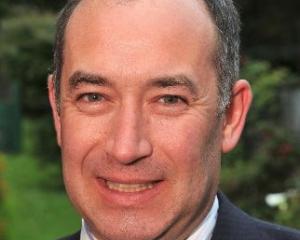The Dunedin City Council has been grappling with Forsyth Barr Stadium issues this past week.
Fundamentally, they stem from the fact the economics of running the stadium are far worse than initially projected, an outcome that should surprise few. Many stadiums around the world struggle financially and Dunedin's is no exception. The existing operating model, as Dunedin City Council chief executive Sue Bidrose said, was ''fundamentally optimistic''. Or as deputy mayor Chris Staynes put it, the idea the original model would break even or even make a small profit was ''pie in the sky''.
Thus, the council agreed to a major review of the stadium in the wake of learning the stadium was again going to fail to achieve its budgeted revenue and was likely to seek more money from the council. This is the only sensible course, and it will of necessity be wide-ranging. There is little point in the stadium continuing to fail to meet its targets and continually going back to the council for top-ups.
Ratepayers at present pay $9.125 million each year towards stadium-related costs, largely made up of loan repayments, with the remaining $144 million debt weighing on the stadium itself. It, via the council venues company, DVML, is expected to pay $4 million rent a year to retire debt. It is this payment that turned operating surpluses into deficits.
That loss amounted to $3.21 million in 2011-12 and $986,000 for the last financial year. While the English rugby test in June will slip into this financial year - making two tests for the year after the Wallabies last October - another loss is expected. The following year could then be worse, conceivably much worse if high-profile concerts and other events cannot be attracted.
Revenue rose to $8.23 million in the last financial year, an impressive figure, while expenditure fell. It will be difficult to match that sort of income as the stadium begins to lose the novelty factor. Before too long, the stadium might well even struggle to meet operating costs, many of which are fixed. As it is, the council contributes up to $750,000 for subsidised community use and up to $400,000 in an events attraction fund.
The stadium was set up supposedly on a commercial model, albeit not paying commercial rates or full debt-servicing costs. What has emerged is how unrealistic that is. There is no way the stadium could pay rates on its official ''Quotable Value'' of $164 million.
The more practical rates of about $140,000, based approximately on the value of the land pre-stadium, is hard enough to meet. And the $4 million debt repayment each year is a burden the council will find is unsustainable.
Clearly, operating the stadium as a ''profitable'' commercial entity is failing. If, however, the stadium is considered a community facility, an asset to Dunedin that some use and some do not and which partly pays its way - like for example Moana Pool - then the impractical expectations can be tempered. Meanwhile, there are different mechanisms and expectations on debt repayment for the costs of assets like Toitu Otago Settlers Museum or the town hall redevelopment.
That, of course, would outrage the hardcore opposition to the stadium. Based on inflated revenue projections, these people can justifiably proclaim ''we told you so''.
Nonetheless, the stadium is here to stay and is a wonderful facility. Dear old Carisbrook would have slipped further and further behind and its inadequacies more and more exposed. The stadium has had other uses beyond rugby, notably through university Orientation. And it is an important symbol for students, their families, Dunedin residents and others in New Zealand, showing Dunedin is more than just a fading centre of historic architectural beauty and wildlife attractions.
The review, whatever its outcome, will have to recognise the need for the stadium to retain a commercial focus so its large drain on ratepayers is minimised. At the same time, councillors and the people of Dunedin will have to understand the stadium's valuable place in the city's extraordinary range of community - educational, cultural and sporting - facilities. It is a valuable community asset.






